Coffee is not just a beverage; it’s a cultural phenomenon that has evolved dramatically over the centuries. From its early beginnings as a simple morning pick-me-up to a globally celebrated artisanal craft, the journey of coffee has been nothing short of fascinating. Amid this evolution, the concept of third wave coffee has emerged as a revolutionary movement that reshapes our connection to this beloved drink. But what precisely is third wave coffee? It’s an intricate weave of history, meticulous craftsmanship, and a profound respect for both the bean and its journey.
This article dives deep into the origins, defining characteristics, and rich culture surrounding this coffee movement, offering readers an immersive exploration into a realm where coffee transcends its status as a mere beverage and emerges as an art, a science, and a conduit for community and sustainability. Join us as we uncover the essence of this movement and its transformative impact on the coffee industry and beyond.
Prefer to multitask? Let the article play in audio while you do other things.
- Introduction & Key Takeaway
- https://app.mysoundwise.com/tracks/16985322247358086e.mp3
- Origins and Evolution
- https://app.mysoundwise.com/tracks/16985323689560071e.mp3
- Characteristics of Third Wave Coffee
- https://app.mysoundwise.com/tracks/16985324045051626e.mp3
- Craftsmanship and Brewing Techniques
- https://app.mysoundwise.com/tracks/16985324250978386e.mp3
- Third Wave Coffee Culture
- https://app.mysoundwise.com/tracks/16985324505493203e.mp3
- Impact and Future of Third Wave Coffee
- https://app.mysoundwise.com/tracks/16985325036352861e.mp3
- Conclusion & FAQs
- https://app.mysoundwise.com/tracks/16985325242046025e.mp3
Third Wave Coffee: Key Takeaways
- Deep-Rooted Respect for Origins: This coffee tendency emphasizes the journey of the coffee bean, from its cultivation to the cup, spotlighting the unique stories and socio-economic impacts associated with each bean’s birthplace.
- Craftsmanship and Precision: This movement celebrates meticulous brewing techniques, fostering a culture where the deliberate choice of beans, precision in brewing, and appreciation for manual methods are paramount.
- Community-Centric Ethos: This movement nurtures a community of enthusiasts, baristas, and consumers. It promotes knowledge sharing, collaborative growth, and mutual appreciation for the craft.
- Sustainability and Ethical Practices: One of the defining characteristics of third-wave coffee is its commitment to eco-friendly practices, equitable trade, and uplifting the well-being of artisan farmers.
- Evolving Coffee Narratives: This coffee movement continually navigates challenges, explores opportunities, and hints at the possibility of future waves, ensuring that the culture of coffee remains dynamic, informed, and forward-looking.
Origins and Evolution
The intricate journey of coffee can be best understood by analyzing its progression through distinctive “waves”. These waves signify pivotal transitions in the coffee sector, encapsulating its evolution from a simple household beverage to an artisanal experience. To fully comprehend the depth and nuances of coffee culture, it’s vital to delve into each of these evolutionary phases.
The First Wave: Coffee as a Commodity

The emergence of the first wave brought about a paradigm shift in how coffee was perceived and consumed globally. Before this period, coffee was primarily seen as just another drink, but this wave began to position it as an everyday commodity for the masses. Here’s a deeper dive into the characteristics of this initial coffee phase: (1)
- Accessibility Over Variety: During this phase, most enthusiasts were not too keen on distinguishing their brew based on its source or the type of beverage. Whether it was an espresso coffee or a café latte, the drink’s specifics often took a back seat.
- Popular Forms of Coffee:
- Quick brew coffee became a favorite due to its convenience.
- Supermarket jarred coffee also gained traction because of its ease of purchase and preparation.
- Consistency and Affordability: The hallmark of the first wave was not just the types of coffee, but the emphasis on making it affordable. The goal was to produce coffee that tasted the same, cup after cup, irrespective of where it was consumed.
- Perks at Eateries: To add to the allure of coffee, many restaurants and diners went the extra mile by offering complimentary top-ups, ensuring that customers stayed longer and enjoyed their experience.
This era truly set the stage for the subsequent waves, emphasizing coffee not just as a luxury but as an essential part of daily life.
The Second Wave: Rise of Specialty Coffee

Emerging around the 1960s and 1970s, the Second Wave brought a renewed perspective on coffee, ushering in an era of specialty brews and an enriched café culture.
- Emergence of Specialty Coffee Shops: Brands like Starbucks and Caribou Coffee began their meteoric rise, emphasizing the holistic experience of coffee consumption.
- Beverage Diversity: Introduction of diverse coffee beverages, from lattes to cappuccinos, targeting a wider audience and making coffee a luxury commodity.
- Ambiance Over Essence: Coffee outlets transformed into social hubs, emphasizing ambiance, with baristas playing a more social role than brewing experts.
- Characteristics: The Second Wave was marked by:
- A heavy emphasis on flavored concoctions.
- Dark, often over-roasted brews.
- A slight nod to the beans’ origin.
This wave marked coffee’s transition from a mere beverage to an experience, focusing on the ambiance and diverse flavors rather than the pure essence of the coffee bean.
Emergence of the Third Wave
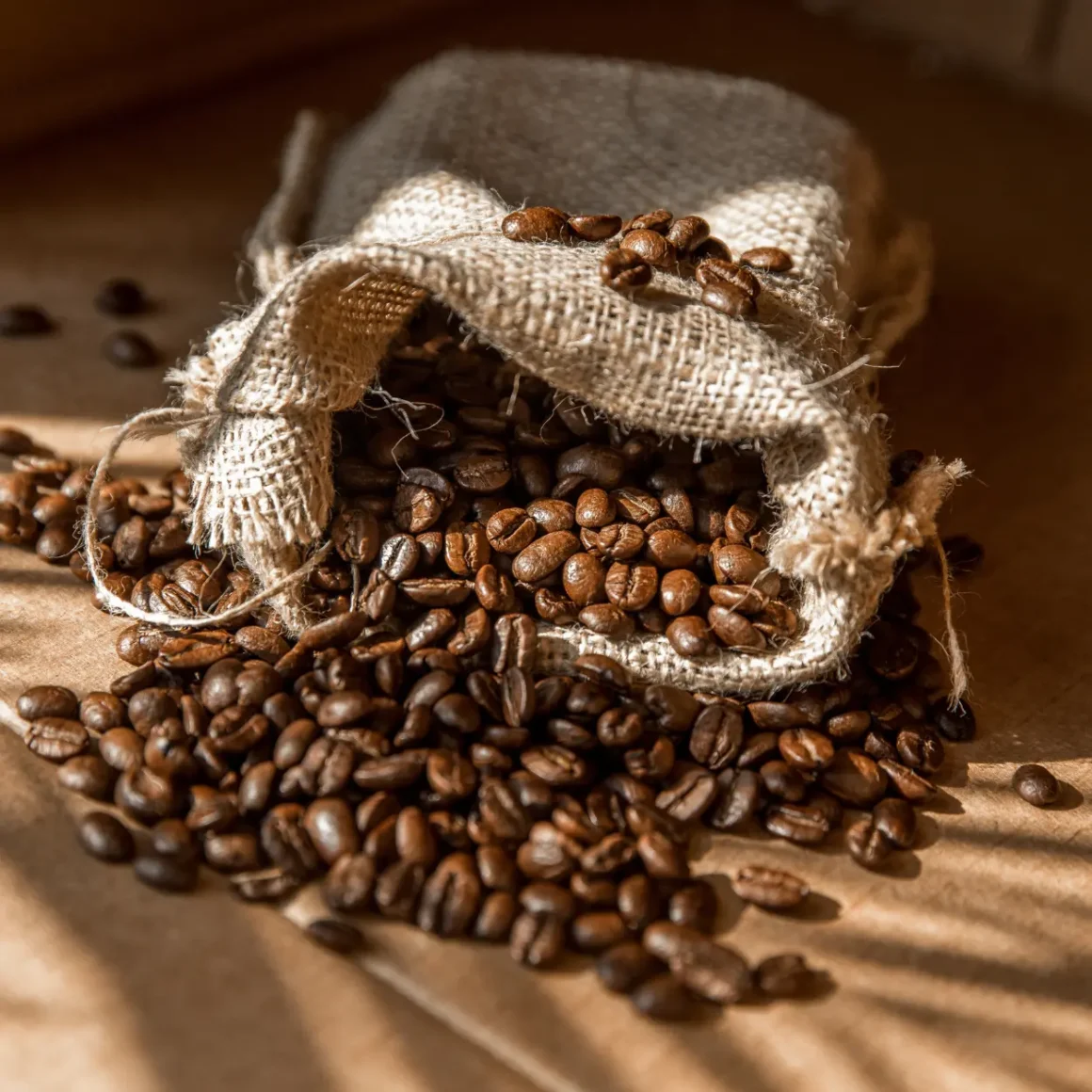
As we approached the new millennium, the coffee world saw the dawn of the Third Wave, a period that sought to redefine not only coffee’s essence but also its profound connections to its origins and multifaceted flavors. Central to this understanding was Jonathan Gold’s 2008 definition of the Third Wave, emphasizing the sourcing of beans from specific farms and employing nuanced roasting techniques to bring out their best characteristics. Coining the term “specialty coffee” in 1974 further enriched this movement, placing the spotlight on the premium quality of beans being used.
This transformation in coffee culture wasn’t just about selecting the finest beans or achieving the perfect brew; it was an intrinsic homage to coffee’s entire journey – from its roots in the soil to the aromatic cup in our hands. Let’s dive deeper into this wave, charting its inception, evolution, and impact.
Origins and History:
- The foundational stones for the Third Wave were laid in the 1970s by visionaries such as The Coffee Connection.
- Enthusiasts like Trish Rothgeb and Timothy J. Castle lent their voice to the term “third-wave coffee” in the early 2000s.
- Its significance and influence reached its peak by 2005, as platforms like National Public Radio began to explore and discuss this transformative wave.
Core Tenets of the Third Wave:
- The Centrality of Quality: This wave laid emphasis on the inherent quality of coffee beans. Cafes sourced premium single-origin beans and distinctive blends, mastering roasting techniques to accentuate individual flavors.
- Barista Evolution: No longer just servers, baristas became connoisseurs, possessing in-depth knowledge spanning from bean selection to the nuances of brewing.
- Sustainability and Ethics: The movement brought to the fore an unwavering emphasis on sustainable practices – from ensuring farmers received their just dues to promoting eco-friendly cultivation methods.
- Characteristics: Central to the Third Wave ethos is a keen focus on clarity and sourcing specifics. It’s not just about brewing coffee, but celebrating its unique source and taste notes, aided by innovative brewing methods.
Evolving Coffee Culture in the United States:
- The First Wave was marked by the ubiquity of instant and canned coffee, with a heavy emphasis on affordability.
- The Second Wave, championed by brands like Peet’s Coffee & Tea, introduced the concept of artisanal sourcing and blending, eventually giving rise to titans such as Starbucks.
- The Third Wave, synonymous with the “specialty coffee” movement, shifted the paradigm, making coffee appreciation akin to an art form.
Shift in the United Kingdom:
- The UK, traditionally dominated by instant coffee, began its metamorphosis in the latter part of the 20th century.
- Initiators like the Seattle Coffee Company in 1995 paved the way, but it was the emergence of third-wave champions like Flat White and James Hoffmann’s Square Mile that marked a true renaissance in the UK coffee scene.
Australia’s Coffee Embrace:
- Melbourne, in particular, embraced the Third Wave with fervor, earning the city its title as the “coffee capital” and exemplifying the wave’s global influence.
Current Status:
- The third-wave ethos has found its home in North America, with a surge in specialized roasters and cafes, and even established brands like Starbucks dipping their toes into this refined coffee culture.
The Third Wave Coffee Movement stands as a testament to the evolving reverence and intricate relationship humans share with coffee. Beyond a mere drink, it represents a journey, an art, and an unyielding pursuit of quality. The mark left by the Third Wave on the world of coffee is both deep and enduring.
Characteristics of Third Wave Coffee
This coffee movement transcends the mere act of drinking coffee and dives deep into the art and appreciation of its unique flavors and origins. It rises from the desire to celebrate the distinctive attributes of coffee, emphasizing the intricate flavor profiles, the specific bean variety, and its cultivation source. This movement stands as a testament to the refinement of coffee appreciation, heralding a new era that opposes the homogenized taste cultivated by the initial coffee waves.
Focus on Single-Origin Coffee
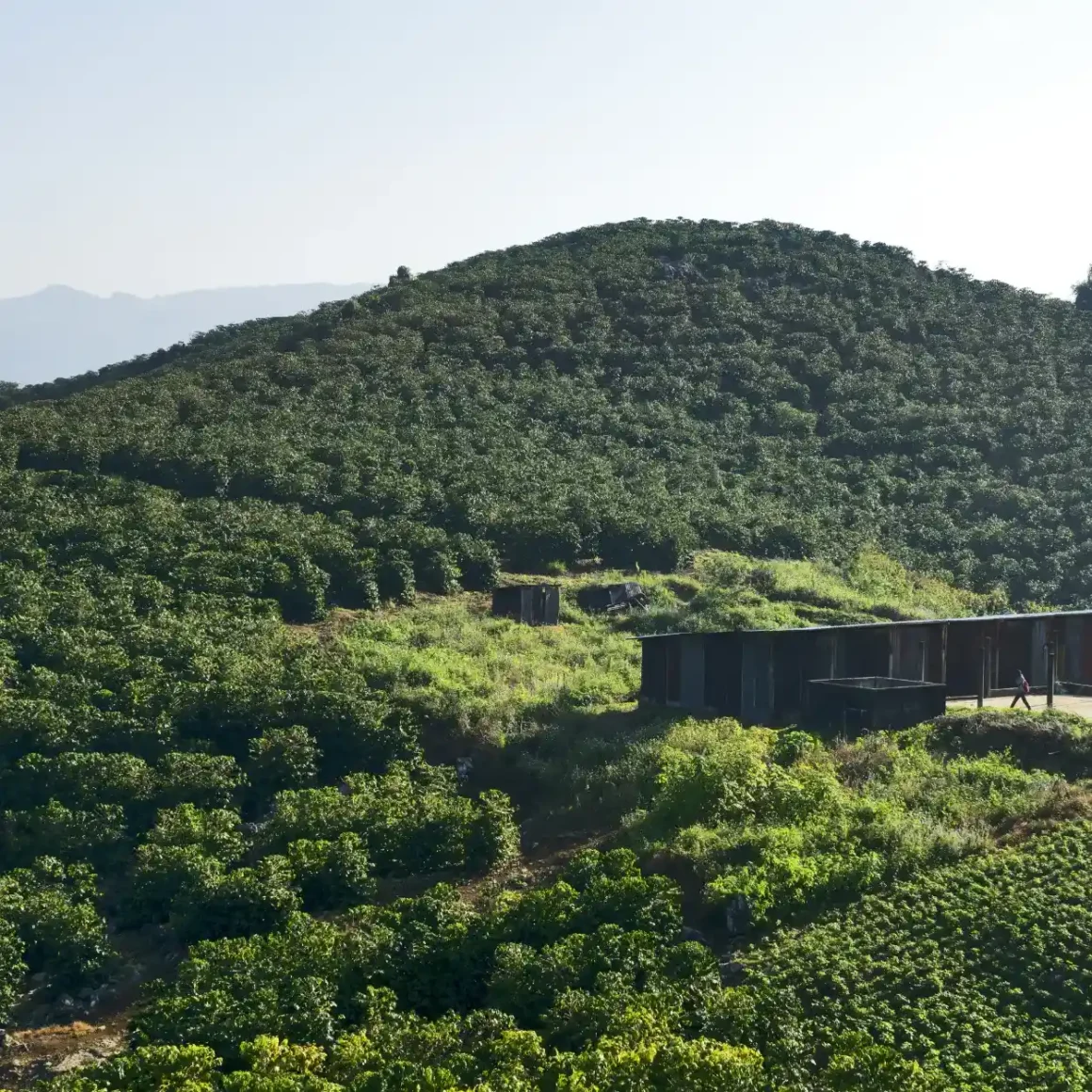
Single-origin coffee is at the heart of this movement, illuminating the significance of the place of cultivation. In the world of third wave coffee:
- Definition of Single Origin: This term refers to a specific category of coffee that highlights the unique location or region of its cultivation. Unlike blends that combine beans from various places, single-origin coffee can trace its character back to a single farm, producer, or specific region within a country.
- Single Origin vs Blend: The primary difference lies in the sourcing. While blends strive to achieve a consistent flavor by combining beans from diverse locales, single-origin beans retain the unique flavors of their exclusive cultivation site, offering a taste as unadulterated as possible.
- Promotion of Transparency: Many third-wave cafes emphasize the use of single origin coffee beans, advocating for direct sourcing from the farm, which eliminates middlemen. This fosters a direct relationship, enhancing transparency between farmers, roasters, and café owners.
The essence of single-origin coffee revolves around its purity. Each cup becomes a journey, taking the drinker to a specific geographical location, introducing them to its unique flavors and stories.
Lighter Roasts and Flavor Profiles

The art of roasting is central to this coffee tendency, with a noticeable pivot towards lighter roast profiles. Within this realm:
- Roast Preferences: Light to medium-dark roasts are predominantly favored. By avoiding over-roasting, third-wave artisans ensure that the bean’s innate characteristics shine through, offering a more nuanced taste experience.
- Exploration of Brewing Techniques: The third wave encourages aficionados to experiment with various brewing methods. This exploration aims to extract the optimal flavors inherent in the beans.
- Crafting Espresso Coffee: The contemporary approach to espresso prioritizes a denser, sweeter taste, often leaning towards the double Ristretto. This method employs roughly 20 grams of espresso per shot, a departure from the traditional 9 grams.
In essence, the third wave coffee movement champions the cause of retaining and accentuating the bean’s natural flavor. It’s about discovering and celebrating the myriad of tastes a bean can offer, and lighter coffee roasts play an instrumental role in that journey.
Direct Trade and Ethical Sourcing
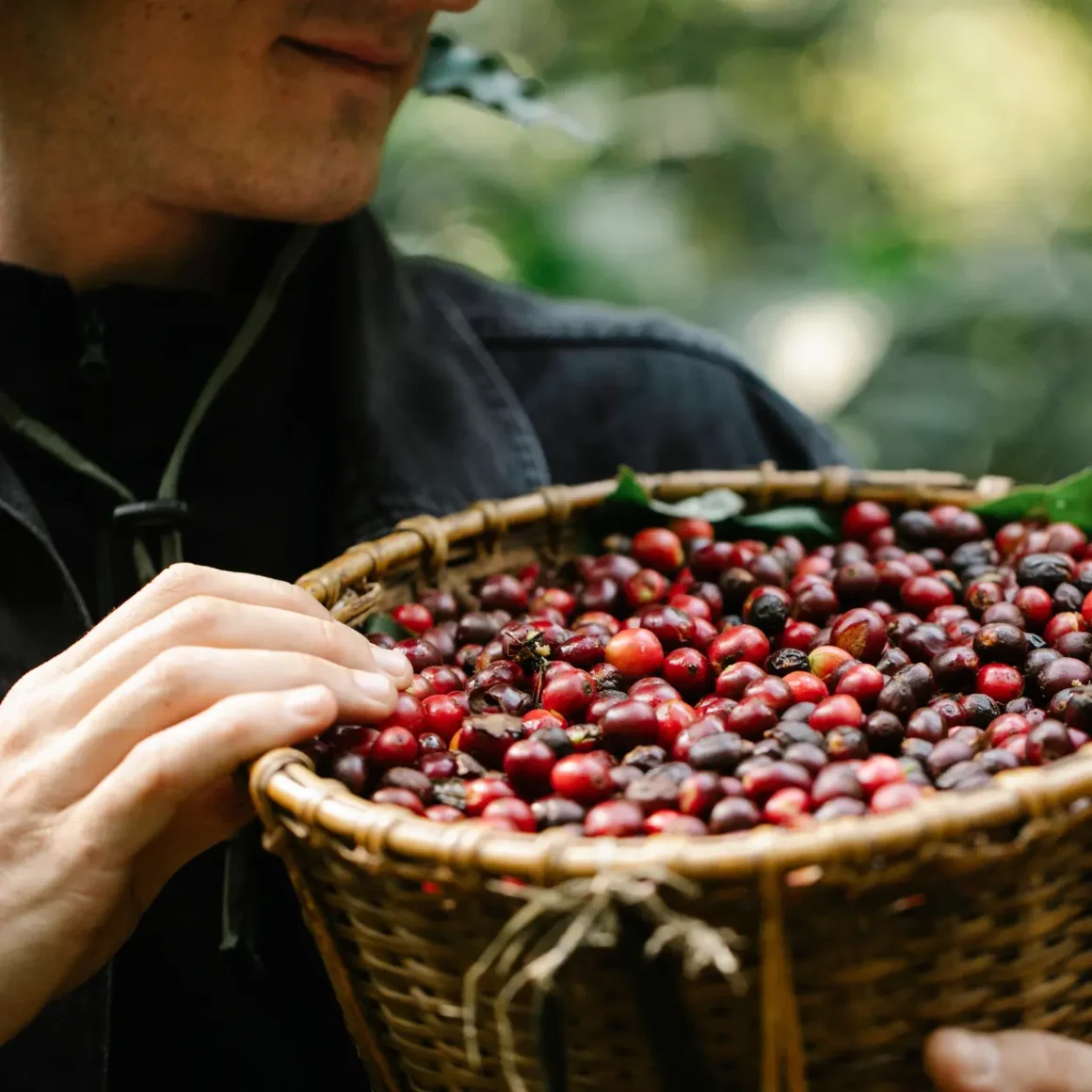
Ensuring ethical practices in sourcing coffee beans is a cornerstone of this coffee tendency. Delving into this sphere:
- Direct Procurement: The emphasis is on procuring coffee directly from growers. This not only ensures a fair price for the producers but also fosters a closer relationship between the grower and the end-consumer.
- Fair Trade Coffee: By choosing Fair Trade coffee, third wave cafes advocate for better working conditions and sustainable practices for coffee growers. (2)
- Educational Experiences: Establishments, like Coffee Bean Corral, often embark on expeditions to coffee farms, such as La Minita in Costa Rica. Such visits highlight the importance of understanding the journey of coffee, from farm to cup.
The era of this coffee movement underscores the significance of ethically sourced beans, ensuring that each sip is not only a delight for the palate but also a testament to sustainable and fair practices.
Craftsmanship and Brewing Techniques
This movement reverberates with an emphasis on craftsmanship and precision, portraying coffee brewing not just as a mundane routine but as an art form. In this era, where the best coffee beans are celebrated, every step in the brewing process, from the grind to the water’s temperature, is methodically executed. This intricate approach aims to unravel the exquisite flavors hidden within each bean, ensuring that every sip is a testament to the journey of the bean from the farm to the cup.
Manual Brewing Methods

Amidst the surge of this coffee tendency, the art of manual brewing has witnessed a renaissance. Traditional brewing methods, valued for their ability to draw out nuanced flavors, are now at the forefront, symbolizing a move away from mass-produced coffee to a more personalized and patient approach. Delving deeper:
- Pour Over: A minimalist method that employs a cone-shaped dripper and filter paper. Hot water is poured gradually over the coffee grounds, resulting in a brew that showcases delicate flavors.
- French Press: A favorite for many, this method requires coarsely ground coffee to be immersed in hot water. After steeping for about four minutes, a plunger is used to separate the grounds, yielding a robust and full-bodied cup of French press coffee.
- AeroPress: An innovative device that brews under pressure, the AeroPress offers versatility. Depending on factors like water temperature and the pressure applied during plunging, it can produce both espresso-like shots and milder brews.
- Moka Pot: A nod to traditional Italian brewing, the Moka Pot uses steam pressure to push boiling water through coffee grounds, delivering a strong and rich coffee.
- Espresso Coffee Machine: Favored by many who love the intense flavors, an espresso machine extracts coffee under high pressure, revealing facets of the bean’s character distinct from other methods.
Navigating the myriad of manual brewing techniques in this movement is akin to exploring an art gallery. Each method paints a different picture of the coffee bean, each with its own story, hues, and textures. And just as art requires appreciation, so does each meticulously crafted cup.
Importance of Freshness
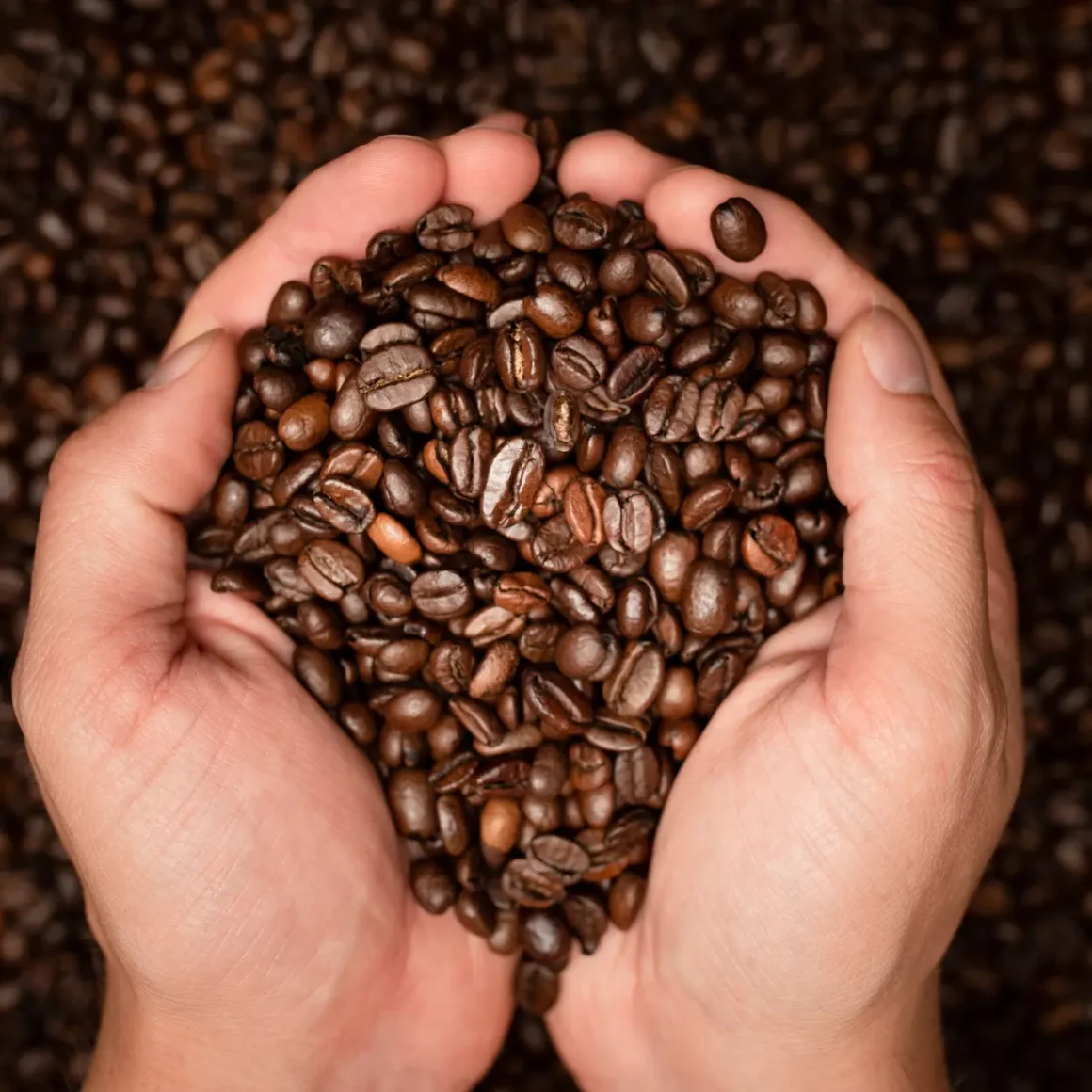
In the world of this coffee tendency, freshness is not just a preference; it’s a requirement. This commitment to freshness ensures that the bean’s true essence is captured in every brew. Key points to consider:
- Bean Quality: Sourcing the best coffee beans is paramount. Freshly roasted beans retain essential oils and aromatics, which are vital for a flavorful cup.
- Grind Just Before Brewing: Coffee starts losing its freshness soon after grinding. Hence, grinding right before brewing is ideal to preserve its rich flavors and aromas.
- Storage: Keeping coffee beans in airtight containers, away from light and heat, ensures prolonged freshness.
In essence, the freshness of coffee in the third-wave movement is akin to the freshness of ingredients in gourmet cuisine. It’s fundamental, accentuating the bean’s innate character and ensuring an unparalleled tasting experience.
The Role of Water Quality

Water, often overlooked, plays a pivotal role in coffee brewing. Given that it constitutes the majority of the brew, its quality can make or break the coffee experience. Delving into its significance: (3)
- Purity: Pure, filtered water free from impurities and odors ensures that nothing interferes with the coffee’s intrinsic flavors.
- Mineral Content: While pure water is essential, a certain mineral content is beneficial. Minerals help extract flavor compounds from coffee, but an excess or deficiency can distort the taste.
- Temperature: Mastering the right water temperature is crucial. Too hot, and it might over-extract the coffee; too cold, and it might not extract enough.
In this coffee movement, water isn’t just a medium; it’s a critical component, with its quality and temperature intricately intertwined with the brewing process. Just as a chef understands the role of each ingredient in a dish, a third wave coffee aficionado recognizes the paramount importance of water in the art of brewing.
Third Wave Coffee Culture
The evolution of coffee consumption has brought us to the pinnacle of appreciation with the third wave of the coffee movement. This is not merely about sipping on a beverage but is an immersive journey spotlighting the best coffee beans, eco-consciousness, and community ethos. With this coffee tendency, the focus shifts from just drinking to understanding, from mere convenience to a conscious celebration of the bean’s entire journey.
Coffee as an Experience
Diving into this tendency is akin to entering an art gallery, where each brew is a masterpiece awaiting appreciation. At the core:
- Origin Recognition: More than just a cup, it’s about honoring the bean’s story. Every sip is a reflection of its birthplace, the culture it stems from, and its impact on the local communities.
- Pursuit of Perfection: This movement champions the belief that it’s better to savor one perfect brew rather than settle for several average ones. Quality takes precedence, ensuring an unparalleled experience with every cup.
- Educative Engagement: Here, coffee drinking is twinned with learning. From understanding the intricacies of cultivation to diving deep into brewing techniques, it’s a continuous journey of discovery.
- Barista Bonding: In this realm, baristas are more than just servers; they’re narrators. With a profound understanding of blends, including barista coffee, they’re consistently enthusiastic about delving into discussions on flavor subtleties.
In essence, third-wave coffee transforms the act of coffee drinking from a mundane ritual into an enriching experience, enlightening the consumer at every step.
Community and Collaboration
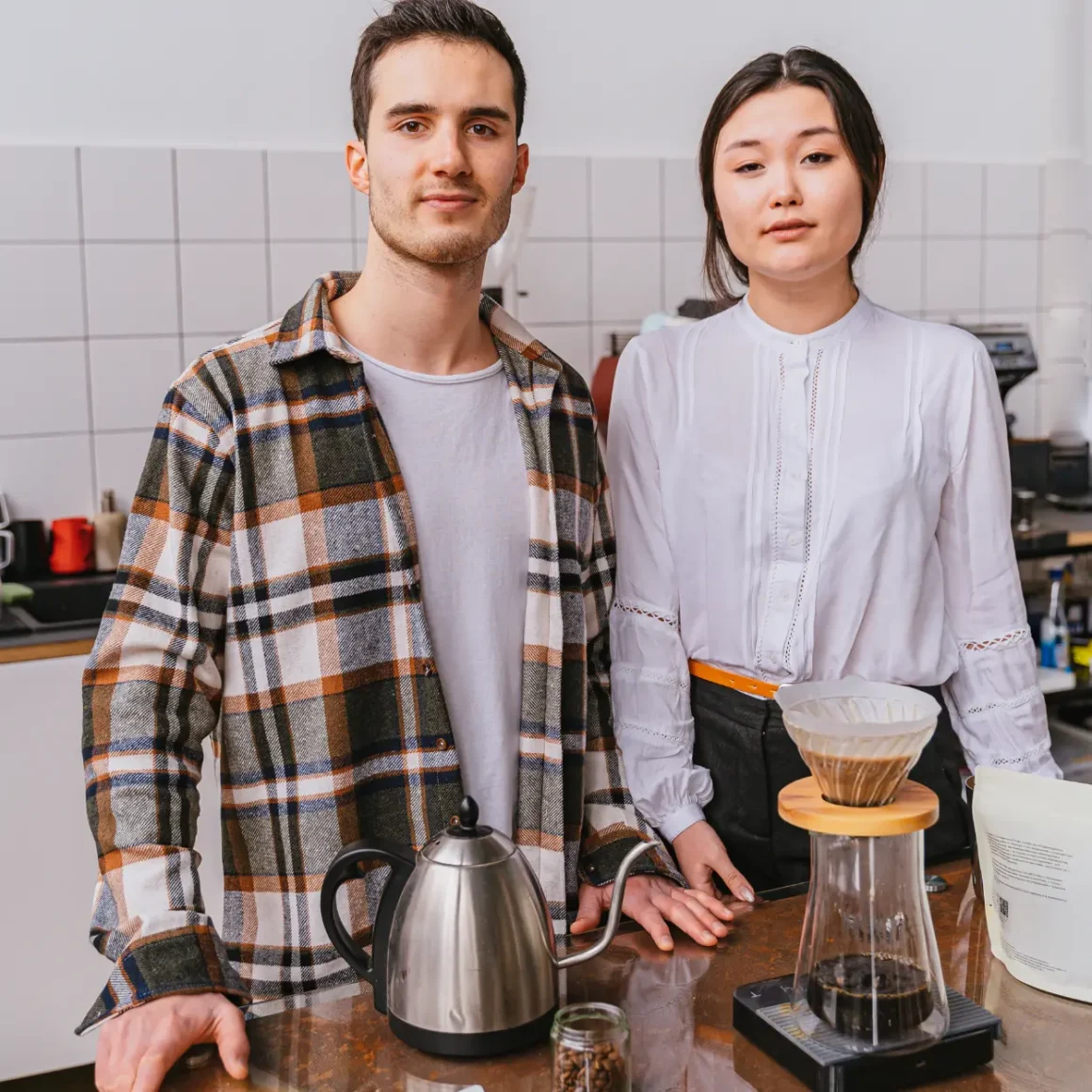
The spirit of third wave coffee goes beyond the individual, fostering a sense of community and collaboration. Key elements include:
- Shared Learning: This isn’t just about individual growth. It’s a communal education, where knowledge about the coffee lifecycle is disseminated and shared, enriching all involved.
- Barista and Consumer Interplay: Third wave coffee places encourage meaningful interactions between baristas and consumers, fostering a sense of belonging and mutual respect.
- Consumer Engagement: It’s not just about passive consumption. Aficionados are actively involved, understanding the link between cultivation methods, taste profiles, and the broader impact on communities and the environment.
The beauty of the third-wave coffee movement lies in its ability to bind people together, creating a global community where shared values and mutual respect are the keystones.
Impact and Future of Third Wave Coffee
In the ever-evolving narrative of coffee, the emergence of the third wave has created ripples that extend beyond just the cup. It represents a revolution of awareness, appreciation, and authentic interaction with the complex tapestry of coffee. But as with every movement, it brings forth certain challenges and prompts questions about the future. Let’s delve deeper into the transformative influence of third wave coffee and explore what lies ahead.
Influence on the Coffee Industry
The third wave has undoubtedly reshaped the coffee industry landscape in profound ways:
- Elevated Standards: No longer confined to merely brewing and serving, coffee establishments now seek the finest beans, optimal roasting techniques, and precise brewing methods to enhance the overall experience.
- Farm-to-Cup Transparency: With an emphasis on understanding the bean’s origin, there’s a heightened demand for transparency, fostering direct relationships between coffee farmers and retailers.
- Economic Shifts: The focus on premium quality and fair pricing has led to better compensation for growers, promoting sustainable livelihoods in coffee-producing regions.
- Innovation Boom: This wave has sparked a plethora of innovative brewing gadgets, techniques, and even coffee-infused products in the market.
In essence, the third wave has elevated coffee from a mere commodity to an art form, demanding excellence at every stage, from cultivation to consumption.
Consumer Education and Awareness
The third wave is as much about the consumer as it is about the coffee:
- Informed Choices: The movement educates patrons to make informed choices, not just based on flavor but also on the socio-economic and environmental impacts of their purchase.
- Interactive Learning: Coffee shops now often double as learning hubs, offering workshops on brewing techniques, bean origins, and more.
- Barista as the Educator: In this era, baristas play a dual role — not only serving coffee but also imparting knowledge, fostering a deeper connection between the drink and the drinker.
Through continuous education and interaction, the third wave has transformed passive coffee drinkers into active participants in the global coffee narrative.
Challenges and Opportunities Ahead
While the third wave has brought numerous advancements, it also presents certain challenges and opportunities:
- Scaling Issues: As more establishments aim to offer a third-wave experience, maintaining consistent quality on a larger scale becomes challenging.
- Environmental Concerns: The coffee industry, though taking strides towards sustainability, still grapples with issues like deforestation and water usage.
- Market Saturation: With the proliferation of coffee shops, differentiation becomes crucial, offering opportunities for niche markets and unique selling propositions.
- Global Outreach: There’s an opportunity to extend the principles of the third wave to regions where coffee is still predominantly seen as a commodity, thus broadening the movement’s impact.
While challenges persist, the third wave has set the foundation for a future that values quality, transparency, and sustainability above all.
Is there a Fourth Coffee Wave?
As we stand at the cusp of what seems like a new era, speculation arises:
- Beyond the Cup: The fourth wave might focus on integrating coffee with lifestyle, merging cafes with other community-focused spaces like libraries or art galleries.
- Tech Integration: Technological advancements could play a significant role, from AI-driven farming techniques to virtual coffee-tasting sessions.
- Holistic Sustainability: The focus could shift to a more holistic approach to sustainability, encompassing every aspect of the coffee supply chain.
- Deeper Connection: It might seek to establish an even deeper connection between consumers and producers, perhaps through virtual farm visits or direct consumer involvement in bean selection.
While the future remains uncertain, one thing is clear: the journey of coffee, from its humble beginnings to its current celebrated status, is a testament to its timeless appeal and its potential to continuously evolve.
Conclusion
In a world awash with diverse cultures and flavors, third wave coffee has etched an indelible mark on the global beverage landscape. This movement, rooted deeply in respect for origins, precision in craftsmanship, and a community-driven ethos, goes beyond the surface of brewing a cup. It delves into the very soul of coffee, highlighting its journey from seed to sip, and emphasizing the narratives and nuances that make each bean unique.
Third wave coffee champions sustainability, fosters consumer education, and continually navigates challenges and opportunities to evolve and enrich the coffee experience. As we ponder the future and the potential emergence of a fourth coffee wave, one thing remains clear: the essence of third wave coffee has set a precedent, reminding us that every cup holds a story, a history, and a culture waiting to be savored. In embracing this philosophy, we don’t just drink coffee; we experience, celebrate, and cherish it.
FAQ
How are the characteristics of Third Wave Coffee different from other waves?
Third Wave Coffee emphasizes the bean's origin, artisanal brewing techniques, and a deep appreciation for the coffee craft, contrasting the commercialization and commoditization seen in previous waves.
What brewing techniques are associated with Third Wave Coffee?
Techniques like pour-over, French press, AeroPress, and espresso are closely associated with Third Wave Coffee due to their ability to highlight nuanced bean flavors.
How has Third Wave Coffee influenced coffee culture?
Third Wave Coffee has shifted coffee culture towards a deeper appreciation for bean origins, artisanal brewing, community engagement, and sustainable practices.
What challenges does the Third Wave Coffee movement face?
The movement grapples with maintaining consistent quality, navigating global market dynamics, and ensuring equitable practices throughout the coffee supply chain.















